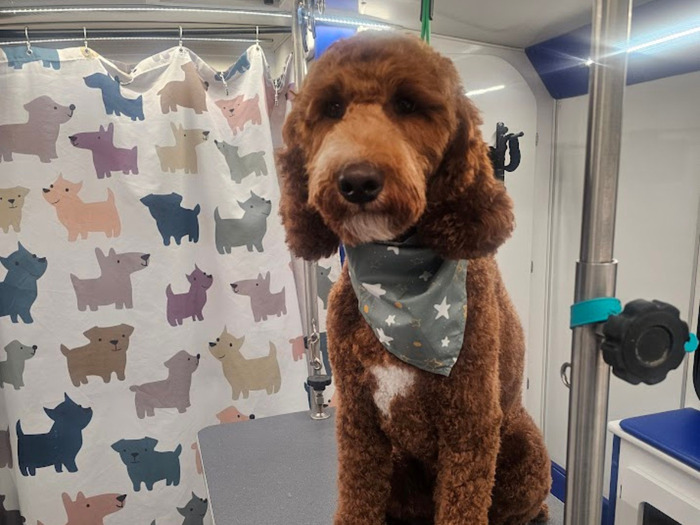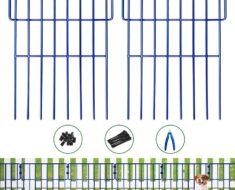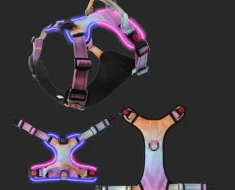If you have a long-haired dog, you know how important it is to keep them clean and comfortable. A sanitary trim can make a big difference in your dog’s hygiene, but it can also feel tricky and even risky if you’re not sure how to do it right.
You don’t want to accidentally hurt your furry friend or make a mess that’s hard to clean up. The good news is, with the right steps and a little patience, you can safely give your dog a sanitary trim at home.
Keep reading, and you’ll discover simple tips and easy techniques that will help you keep your dog fresh and happy without the stress.

Credit: www.pawparentacademy.com
Preparing Your Dog
Gather all the tools before starting. You will need blunt scissors, dog clippers, comb, towels, and styptic powder. Keep everything close to avoid leaving your dog alone.
Pick a quiet and cleanplace with good light. A bathroom or kitchen floor works well. Use a non-slip mat to keep your dog steady and safe.
Help your dog feel calm. Speak in a soft voiceand pet gently. Give small treats to reward good behavior. Take breaks if your dog seems stressed.

Credit: www.happyhoundsgrooming.com
Understanding Sanitary Trim
A sanitary trimhelps keep a dog’s private areas clean. It stops hair from trapping dirt and waste. This trim lowers the chance of infections and bad smells.
Focus on the areas around the anus, genitals, and under the tail. These spots get dirty easily. Use scissors or clippers carefully to avoid hurting your dog.
Keep the hair short but not too close to the skin. Check for any cuts or irritation after trimming. Regular trims make your dog more comfortable and cleaner.
Step-by-step Trimming Process
Start by gently brushingyour dog’s fur to remove tangles. Use a wide-tooth comb for thick areas. Work slowlyto avoid hurting your pet. This step makes trimming easier and safer.
Carefully clip the furaround private areas using a small trimmer. Keep the blades moving to prevent heat buildup. Hold the skin taut to avoid cuts. Stay calm and patient to keep your dog relaxed.
Use scissors with rounded tips for trimming. Trim small sectionsat a time. Always cut away from the skin. Keep fingers between the scissors and the skin. This helps avoid accidental nicks and cuts.

Credit: www.happyhoundsgrooming.com
Safety Tips
Keep your dog calmby speaking softly and moving slowly. Hold your dog gently but firmly to stop sudden moves. Use treats to reward good behavior during the trim. Always check your toolsbefore starting. Sharp scissors and clippers reduce pulling and accidents.
Cut hair slowly and carefully around sensitive areas. Avoid pressing too hard on the skin. Keep a first aid kit nearby for small cuts or scrapes. Use blunt-tipped scissors for extra safety.
Clean all tools after each use with warm water and soap. Disinfect clippers and scissors with alcohol to kill germs. Dry tools well to stop rust and keep them sharp. Store tools in a clean, dry place until next use.
Aftercare For Your Dog
Clean the trimmed area with warm water and a soft cloth. Use mild soap if needed. Avoid harsh chemicals that can hurt your dog’s skin. Dry the area gently to stop moisture buildup. This helps prevent infections.
Check the skin often for redness or swelling. Watch for your dog licking or biting the trimmed spot. These signs may mean irritation or discomfort. Contact your vet if you see anything unusual.
Give your dog a treat or praise after trimming. This makes the experience positive and less scary. Repeat good rewards to help your dog stay calm next time.
When To Seek Professional Help
Some dogs may feel scared or nervous during grooming. Signs like biting, growling, or shakingshow grooming is hard for them. If your dog keeps moving a lotor has skin irritation, it is best to stop. Grooming tools can hurt if used wrong.
Finding a good groomer helps keep your dog safe and happy. Look for someone with experience with long-haired dogs. Check reviews or ask friends for trusted recommendations. A groomer who is patient and gentlemakes the job easier.
Frequently Asked Questions
How Often Should I Do A Sanitary Trim For Long-haired Dogs?
Sanitary trims for long-haired dogs should be done every 4 to 6 weeks. Regular trims prevent matting and maintain hygiene. Adjust frequency based on your dog’s activity and coat growth to keep them clean and comfortable.
What Tools Are Best For A Safe Sanitary Trim?
Use sharp, rounded-tip scissors or electric clippers designed for pets. These tools reduce the risk of cuts and irritation. Ensure all equipment is clean and sanitized before trimming to maintain safety and hygiene.
How Can I Keep My Dog Calm During The Trim?
Create a quiet, comfortable space and use gentle, soothing tones. Offer treats and take breaks if your dog seems stressed. Patience and positive reinforcement help make the sanitary trim a calm experience.
Can I Do A Sanitary Trim On My Dog At Home?
Yes, you can safely do a sanitary trim at home with the right tools and techniques. Follow step-by-step guides and be gentle to avoid injury. Regular trims help maintain your dog’s cleanliness and comfort between professional groomings.
Conclusion
Trimming your long-haired dog’s sanitary area keeps them clean and healthy. Take your time and use the right tools. Stay calm and gentle to avoid hurting your dog. Regular trims prevent matting and skin problems. Watch your dog’s comfort and stop if they feel stressed.
Practice makes the process easier and quicker. A safe sanitary trim helps your dog feel fresh and happy. Keep these tips in mind for a safe, stress-free grooming experience at home.





